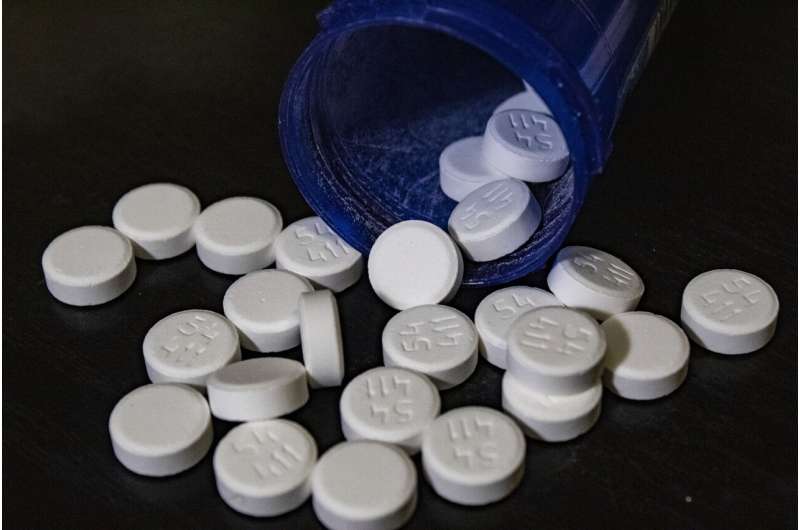This article has been reviewed according to Science X's editorial process and policies. Editors have highlighted the following attributes while ensuring the content's credibility:
fact-checked
peer-reviewed publication
trusted source
proofread
Substantial racial inequalities despite frequent health care contact found in treatment for opioid use disorder

In the wake of an opioid-related event such as an overdose, infection, or detox admission, white patients received medication for opioid use disorder (OUD) up to 80% more frequently than Black patients and up to 25% more frequently than Hispanic patients, according to a new study led by researchers at Harvard T.H. Chan School of Public Health. Across racial groups, patients made a similar number of visits to health care providers in the six months following such an event—indicating that disparities in treatment are not explained by low contact with care.
"Opioid overdoses are rising faster in the Black population than in any other racial group: In 2021, they surpassed overdose rates in the white population for the first time in decades. And rates of overdose in the Hispanic population have recently risen by 40%," said lead author Michael Barnett, associate professor of health policy and management. "We need to understand barriers to obtaining life-saving addiction treatment for minority populations to address this huge demographic shift and public health crisis."
The study will be published in the May 11, 2023, edition of the New England Journal of Medicine.
While racial disparities in addiction treatment have been identified by previous studies, little of this research examined the full range of medications for OUD or accounted for non-recommended medications like opioid analgesics and benzodiazepines, both of which are associated with substantial risk for OUD patients.
To fill in these gaps, researchers pulled a random 40% sample of Medicare beneficiaries with disability—a group of Americans among the most affected by OUD—who experienced at least one acute OUD-related event between 2016 and 2019. Using the Medicare claims, researchers observed 25,904 OUD-related events—15.2% of which occurred among Black patients, 8.1% among Hispanic patients, and 76.7% among white patients.
In 180 days following these events, Black patients received and filled a prescription for buprenorphine, a lifesaving therapy for OUD, 12.7% of the time; Hispanic patients, 18.7% of the time; and white patients, 23.3% of the time. Naloxone, a drug for reversing overdoses that has few restrictions on its distribution (in contrast to buprenorphine), followed the same pattern: Black patients received and filled a prescription after 14.4% of OUD events; Hispanic patients, 20.7%; and white patients, 22.9%.
In a follow-up analysis using data from 2020 to 2021, researchers found that these differences were not explained by differing access to methadone by racial/ethnic group. Black patients received and filled these prescriptions after 8.3% of OUD events; Hispanic patients after 11.2% of OUD events; and white patients after 8.6% of OUD events.
Despite well-known and substantial risks, prescriptions for opioid analgesics and benzodiazepines were received and filled frequently. Prescriptions for opioid analgesic were received and filled after 23% of OUD-related events regardless of race. But prescriptions for benzodiazepines were received and filled by Black patients 23.4% of the time, by Hispanic patients 29.6% of the time, and by white patients 37.1% of the time.
"Skyrocketing rates of overdoses in minority groups are unlikely to shift without a major overhaul in the addiction treatment system," said Barnett. "Addressing the overdose crisis and racial disparities in addiction will likely require community-specific interventions that engage with minority populations and the clinicians who serve them to reduce stigma and bolster trust."
More information: Racial inequality in receipt of medications for opioid use disorder, New England Journal of Medicine (2023). DOI: 10.1056/NEJMsa2212412


















